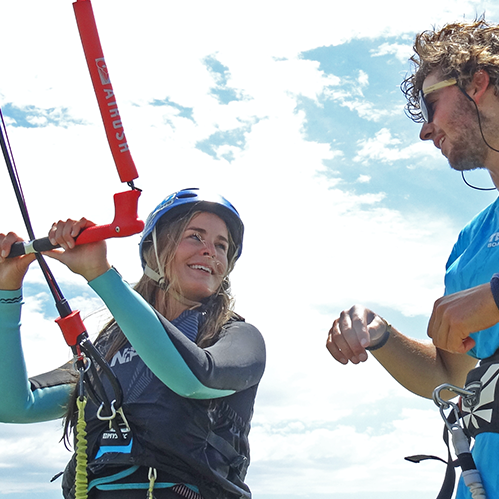Kitesurfing is an exciting water sport that combines elements of surfing, windsurfing, and kite flying. Whether you’re a seasoned water sports enthusiast or a beginner, learning to kitesurf can be an incredible adventure. However, like any sport, it is important to receive proper instruction to ensure safety and success. Here are the key stages of a kitesurfing lesson, from the basics to more advanced techniques:
Introduction to Equipment
The first stage of a kitesurfing lesson involves getting acquainted with the essential equipment. This includes the kite, control bar, harness, board, and safety gear. Your instructor will explain the purpose and function of each piece of equipment, and teach you how to set it up and check for any potential issues.
Safety Instructions
Kitesurfing can be an extreme sport, and understanding safety protocols is essential. Your instructor will provide a comprehensive safety briefing, covering topics such as wind conditions, weather awareness, and safety rules on the water. You will also learn about the kite’s safety systems, including how to release and depower the kite in case of an emergency.
Understanding the Wind
Wind is the driving force behind kitesurfing, and understanding how it works is fundamental. You will learn about wind direction, wind strength, and how to read wind forecasts. Your instructor will teach you how to assess the wind conditions at your specific location and explain the wind window, which is the safe area in which you can fly the kite.
Basic Kite Control
In this stage, you will get hands-on experience with the kite. You will practice controlling the kite on land, learning how to fly it, steer it, and generate power. This is an important step in building your confidence and skills, as you will need to master kite control before progressing to the water.
Body Dragging
Once you have gained proficiency in controlling the kite on land, you will move to the water for body dragging exercises. Body dragging involves being pulled through the water by the kite, and it is an essential skill for retrieving your board and self-rescue if needed. You will practice different body dragging techniques, including upwind and downwind movements.
Water Start
The water start is a significant milestone in kitesurfing. It is the moment when you transition from being pulled through the water to getting on your board and riding. During this stage, you will learn how to position the kite, control the power, and coordinate your movements to stand up on the board.
Board Control
After you have mastered the water start, you will work on improving your board control. This stage involves learning how to balance on the board, change direction, and maintain stability while riding. Your instructor will provide tips and drills to help you become more confident and skilled at maneuvering the board.
Riding Upwind
Riding upwind is an essential skill for kitesurfers, as it allows you to navigate the water more effectively. In this stage, you will learn techniques for riding upwind, such as edge control and body positioning. Riding upwind can be challenging, but it is a key step in becoming an independent kitesurfer.
The key stages of a St. Kilda kite surfing lesson provide a structured and safe way to learn the sport and progress from a beginner to a proficient kitesurfer. With dedication, practice, and the guidance of a skilled instructor, you can embark on a kitesurfing journey that will take you to new horizons on the water.
Ride the Wind and Waves Safely
Safety always comes first, and mastering the basics is essential before attempting more advanced kiteboarding tricks and techniques. Join our kiteboarding lessons in St. Kilda and enjoy the incredible world of kitesurfing with us. Contact us today to know more about our kitesurfing lessons.
For more updates, follow us on Facebook.

